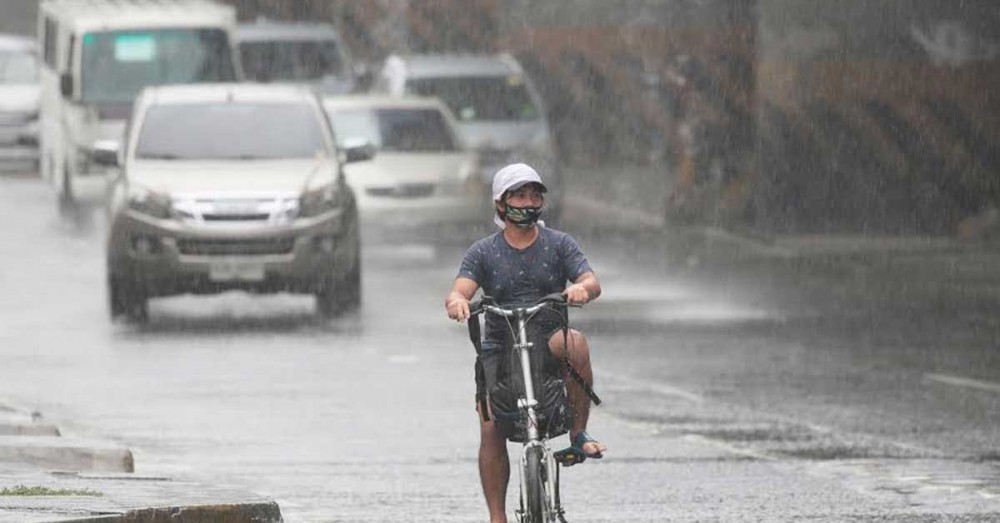As Metro Manila moves into the less strict general community quarantine (GCQ), public transportation services will reopen but in a limited capacity to contain the spread of coronavirus disease 2019 (COVID-19).
On Friday, May 29, the Department of Transportation (DOTr) posted on its Facebook page the guidelines and protocols for the road transport sector, including buses and railways.
But the Department of the Interior and Local Government said on Thursday, May 28, that public utility jeepneys would still not be allowed to ply the streets of Metro Manila even under GCQ.
On Thursday night, President Duterte placed the National Capital Region (NCR), Region 2 (Cagayan Valley), Region 3 (Central Luzon), Region 4-A (Calabarzon), Albay, Pangasinan and Davao City under GCQ starting June 1 “until we have reviewed the general situation” amid the pandemic.
Metro Manila, Laguna (which is part of Region 4-A), and the Central Luzon provinces of Bataan, Bulacan, Nueva Ecija, Zambales and Pampanga including Angeles City have been under modified enhanced community quarantine (ECQ) since May 15.
The fate of Mandaue and Cebu cities, which are still under ECQ, was not discussed.
While Regions 2, 3, 4-A, Albay, Pangasinan and Davao City will be under GCQ, the rest of the country will shift to modified GCQ.
On Saturday, May 30, the government announced that Zamboanga City and Central Visayas will also be under GCQ. Read more: Zamboanga City, Central Visayas also under GCQ by June 1; Guidelines for barbershops and salons under GCQ, MGCQ released
In a GCQ setting, the DOTr is set to adopt along EDSA a system of dedicated bus lanes within the inner lane of EDSA. There will be 15 bus boarding areas, five of which can be accessed from Metro Rail Transit stations and the rest from footbridges to be installed under the MRT railway tracks. Pedestrian crossings will be put up. Boarding from the sidewalk will no longer be possible.
The transformation of EDSA will include designated lanes for bicycles.
In a meeting with Duterte at Malacañang Thursday night, DOTr Secretary Arthur Tugade announced that the Light Rail Transit (LRT) 1 and 2 as well as the MRT 3 would reopen with limited, gradual and calculated capacity.
“It will be an average of 10 to 12 percent on LRT and MRT while the PNR (Philippine National Railways) will operate on 35 percent capacity,” Tugade announced.
“Let us not expect train operations to be 100 percent. As I said, we have to balance our mandate to provide transportation with our responsibility to help (stop) the spread of the virus,” Tugade said.
Stringent sanitary measures
For public transportation in areas under GCQ, stringent sanitary measures have been set, and will be strictly enforced. These include:
• Wearing of face masks at all times
• Implementation of no-contact measures such as cashless payments
• Use of thermal scanners; provision of alcohol and sanitizers in public utility vehicles (PUVs)
• Disinfection of high-touch surfaces of vehicles and setting up of disinfection facilities at various public transport terminals
• Contact tracing
Two phases
In the adoption of these guidelines in areas under GCQ, there will be two phases to be executed for allowing the operation of the different modes of public transportation.
For Phase 1 (from June 1 to 21), trains and bus augmentation, taxis, transport network vehicle service (TNVS), shuttle services, point-to-point buses and bicycles will be allowed to operate, with limited passenger capacity.
Tricycles will also be allowed, subject to the prior approval of the concerned local government units.
In Phase 1, no provincial buses will be allowed to enter Metro Manila.
Meanwhile, for Phase 2 (from June 22 to 30), public utility buses or PUBs, modern PUVs and UV Express will be allowed to operate, also with limited passenger capacity, along with the transport modes that were allowed to operate under Phase 1.
The one-meter physical distance rule between persons will be strictly enforced inside all PUVs and mass transport units, in adherence to health protocols.
The DOTr said it would harness technology in implementing its initiatives for road-based transport. The objective is to minimize physical contact or face-to-face interaction to prevent the spread of COVID-19.
The modernization initiatives include the automatic fare collection system (AFCS) for cashless payment transactions, electronic toll collection, and global navigation satellite system (GNSS)/global positioning system (GPS).
Under the new normal, other institutional changes that the DOTr will implement are the following:
• Routes rationalization for a more effective traffic management
• Industry consolidation, to make it more efficient and financially tenable for stakeholders
• Use of shuttle services will be encouraged, to prevent students and employees from contracting the virus
• Promotion of the use of non-motorized transport such as bicycles, to maintain physical distancing, provide environmental and health benefits and promote efficient road space use.
Gradual opening of airports
Also on Thursday, Tugade revealed plans to designate as international gateways the airports in Clark, Cebu and Davao to decongest the Ninoy Aquino International Airport (NAIA) terminals amid the COVID-19 pandemic.
Tugade is pushing for a gradual opening of airports as well as the setting up of quarantine facilities and treatment centers to be strategically located near the terminals.
“The approach of the (DOTr) is partial, gradual and calculated, and more importantly by phases,” he said.
Duterte described the DOTr plan as “terrific,” saying it is in line with the government’s transition to a new normal.
In transitioning from MECQ to GCQ, Tugade said the NAIA Terminals 1, 2, 3 and 4 must be decongested.
“Una po, ngayon ho concentrated ’yung international landing and takeoff doon po sa NAIA…. Ang gagawin po namin, once we transition from MECQ to GCQ, is to expand the international aviation gateways to include Clark, Cebu and Davao,” he said.
Flights have been canceled and airport operations have been restricted since the outbreak of COVID-19, which was first reported in Wuhan City, in China’s Hubei province in December.
Tugade also bared plans to open international gateways in Zamboanga, Iloilo, Bacolod and Bohol during the transition.
He stressed the need to spread “the aviation centrum of operations to other parts of the country, other parts of the region” and prevent the massive concentration of activities in Metro Manila.
Tugade said the government would eventually allow domestic air operations as the country shifts to GCQ and MGCQ before the new normal.
It is equally important, Tugade said, to set up testing laboratories as international air traffic is spread out from Manila to aviation gateways in major cities in Luzon, the Visayas and Mindanao.
This way, Tugade said, all incoming passengers would be strictly subjected to the minimum health standards.
The DOTr has been coordinating with the Department of Health and Philippine Red Cross for the accreditation of the testing laboratories.
“While we put up the testing laboratories, there are already accredited hospitals which can do the testing in Clark and in Cebu. These international gateways can be used as we wait for the accreditation from Red Cross or the DOH,” he said.
Share This Post















